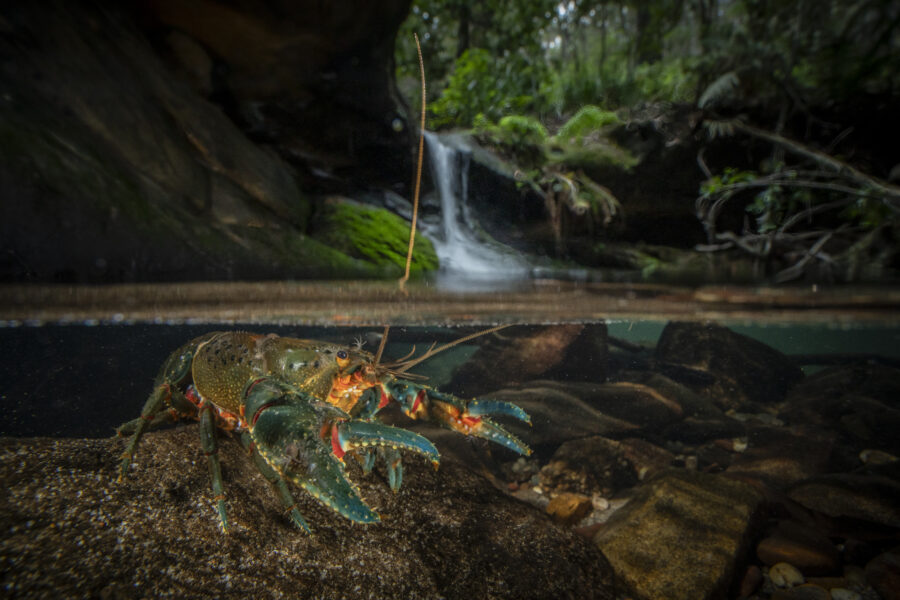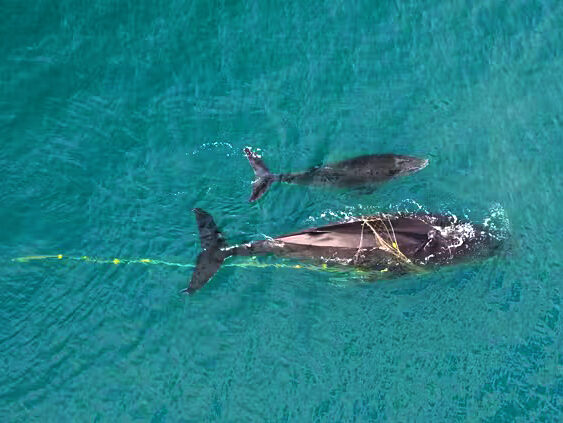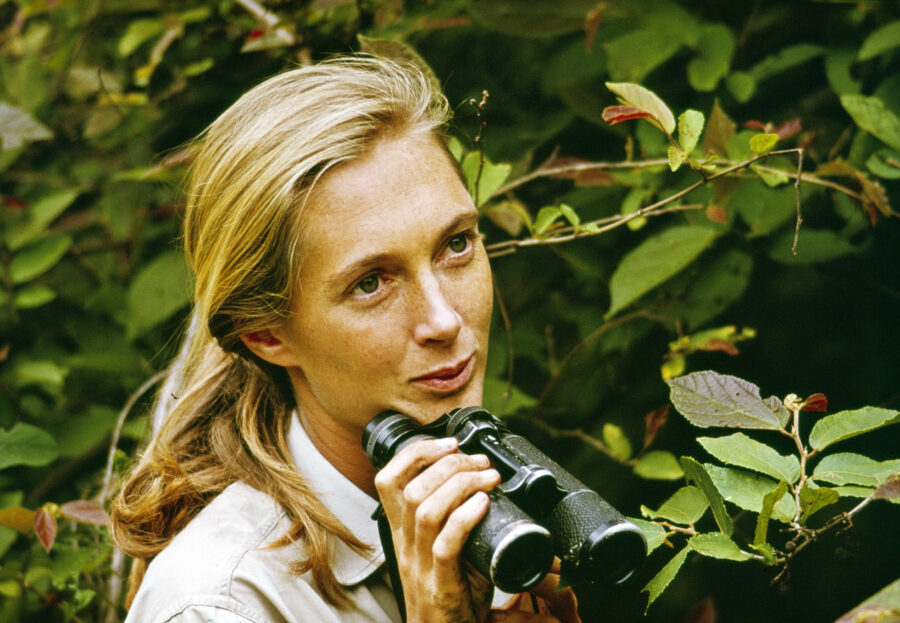Trevor Evans peers into a wooden nest box. “Ah, somebody’s awake,” he says with satisfaction as he pulls out a tiny, wriggly scrap of fur with a long tail – a thumb-sized mountain pygmy-possum (Burramys parvus) that sniffs the cold air with expectant curiosity. This is a juvenile male and, along with 22 females and seven other males of this critically endangered species being held nearby, he’s supposed to still be in torpor – a type of hibernation the species enters during the coldest seasons.
In fact, he shouldn’t be up now anyway as it’s mid-morning and these possums are crepuscular – normally only awake in the twilight before early morning and in the late afternoon. But, like a wide-awake toddler at bedtime, this little critter is alert, active and on the lookout for adventure.
To Trevor, this scene is more than endearing. It’s a sign of resilience; a flicker of hope for a species balanced precariously on the edge of extinction. This tiny possum species has evolved to survive in an alpine habitat but, as climate change progresses, the usual features of his environment are already shifting, creating conditions to which the species isn’t adapted.

We’re at Trevor’s Secret Creek Sanctuary, at Lithgow, on a misty autumn morning on the western slopes of the Blue Mountains, in New South Wales, and to me the temperature is very chilly to cold. But to this mountain pygmy-possum, it would be chilly to mild.
That’s the point of this little fella being here. He’s part of a radical plan for this fragile, critically endangered alpine marsupial species to beat extinction by being trained to live in warmer lowland forests.
“We’re breeding them here at Lithgow at 1000m and hoping that we can reintroduce them down the slope from where they currently live in the Snowy Mountains,” Trevor explains.
A future in the deep past
University of NSW palaeontologist Professor Michael Archer has spent decades studying the fossil record of possums and other marsupials. He believes the key to the mountain pygmy-possum’s future lies in its deep past.
“We’ve been suggesting this idea for probably more than 20 years,” he says. “Originally, everybody thought we just had to protect the alpine zone, but with climate change that’s impossible. The fossil record shows mountain pygmy-possums were once widespread in cool, lowland rainforests, not icy peaks.”
This record is not simply a window into ancient worlds but a potential manual for survival.
“The past tells us how we got to the present,” Mike explains. “But more importantly, it offers clues about how we might move from a threatened present into a viable future.”

Before the 2019–20 Black Summer bushfires, Kosciuszko National Park had an estimated 1000 possums surviving at two main sites. Drought had led to a decline in their main food source – bogong moths – and in 2020 fire decimated their habitat and the population dropped to about 700 animals.
Threatened species officers from NSW’s Saving Our Species program and the NSW National Parks and Wildlife Service (NPWS) launched an emergency project to supply ‘bogong bickies’ and water to save the remaining population.
And in May this year, NSW Environment and Heritage reported a rise in mountain pygmy-possum numbers. At one site, researchers recorded 107 possums, 78 of them breeding females, each with four young tucked inside their tiny pouches. The combined population at both main sites is now believed to be more than 940.
Yet the situation remains dire.
The possum count was led by Dr Linda Broome, a now-retired threatened species officer with the NSW Department of Climate Change, Energy, the Environment and Water. Linda has dedicated nearly half her life to securing a future for this possum – now one of Australia’s rarest mammal species.
Current estimates suggest there are fewer than 2000 pygmy-possums left in the wild, with numbers fluctuating depending on seasonal extremes.
Professor Michael Archer – Palaeontologist, University of NSW
I’m confident this animal can be saved from extinction.
UNSW researcher Dr Hayley Bates, whose PhD focused on understanding how these possums managed to cling to survival in the alpine habitat, found that mountain pygmy-possums must escape freezing winter temperatures by hibernating in rock piles using the snow cover as insulation. During the summer, those rock piles also protect them from dangerously high temperatures. Anything above 28ºC can be fatal.
These possums hibernate from autumn until around September and emerge precisely as bogong moths swarm the highlands. They mate quickly in late spring, and then raise young in a brief summer window. Any disruption – missing moths, warmer winters, bushfire – upends the balance.
With climate change shrinking the depth and duration of snow cover, the possums periodically rouse from torpor, exposing them to freezing air temperatures without their insulating blanket of snow. Add habitat fragmentation, predation by cats and foxes and intensified farming, and “we’re killing off our wildlife faster than what it can breed”, Trevor laments.
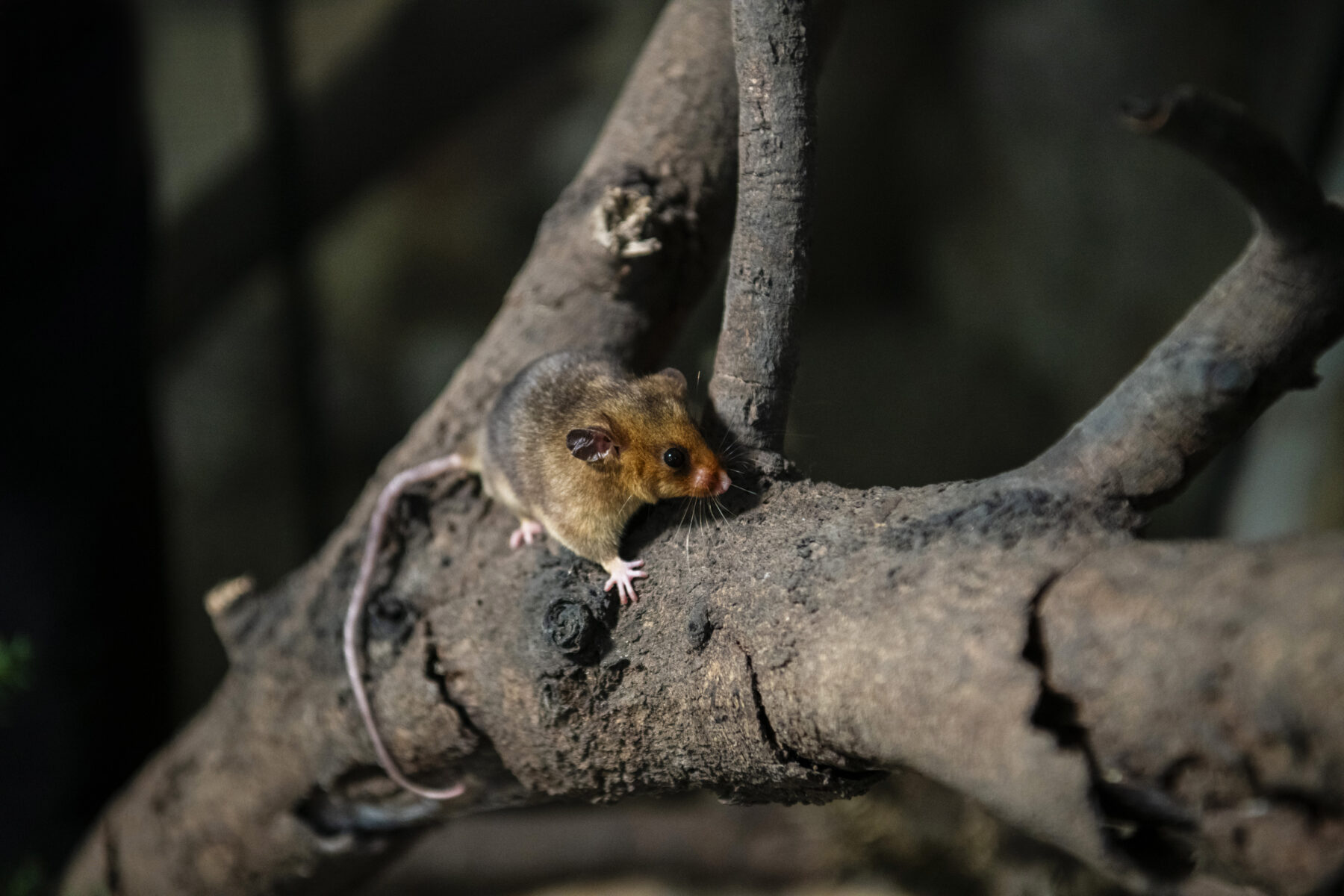

Then there’s the decimation of the possums’ main source of fat to get them through the winter: bogong moths. A single possum will eat at least 10 moths a night in a normal spring. But today, there are virtually no bogong moths around.
It would only take two mild winters in a row with reduced snowfalls to wipe out the mountain pygmy-possum species in the wild, Mike predicts. “The extinction [it’s] facing is definitely a human-caused climate change problem,” he says. “If we have the technical capacity to undo that disaster, then we also have the moral responsibility to give them a second chance.”
That’s where Trevor Evans and his purpose-built Secret Creek Sanctuary come in.
Marooned relics
Mike’s research at the Riversleigh World Heritage Area’s fossil deposits in north-western Queensland, which spans the last 25 million years of Australian prehistory, demonstrates the mountain pygmy-possum isn’t a creature of the snowy peaks by choice but by necessity. “They’re essentially marooned relics of a once-widespread lineage,” Mike says.
Fossil ancestors thrived in lowland rainforests, moving into the mountains only as climates shifted. “The fossil record shows where they were healthiest and most abundant – always in much richer, more diverse communities than those we have today,” Mike says. “That’s why Secret Creek and similar lowland sites could give them a real future.”

The species was thought to be extinct and only known through the fossil record until a live possum was found at Victoria’s Mt Hotham in 1966.
In 2020 Trevor learned about the Burramys Project – hatched by climatologists and palaeontologists at UNSW in Sydney – and wondered whether Secret Creek Sanctuary could serve as a living laboratory for the possum’s second chance.
The idea was given a boost from an unexpected source when Prague Zoo donated $190,000 towards building a breeding facility for the possum, raised by the Czech public in response to the Black Summer bushfires that killed an estimated 3 billion native Australian animals. Additional support came from UNSW, the Australian Geographic Society, the Australian Ecosystems Foundation Inc. (AEFI), the Australian Wildlife Society and the National Parks Foundation.
If we have the technical capacity to undo.. human-caused climate change.. then we also have the moral responsibility to give them a second chance.
Professor Michael Archer – Palaeontologist, University of NSW
The sanctuary’s purpose-built mountain pygmy-possum breeding facility opened in September 2022. It boasts outdoor enclosures, an insulated rock wall with deep nest boxes, climate-controlled refuges, sprinklers for hot days and surveillance technology. There are quarantine rooms, an animal preparation room, storage room, food preparation area, a research and observation room, and an office area with monitoring cameras and microchip readers to record the possums. The sanctuary works in tandem with Healesville Sanctuary in Victoria.
The first 14 possums were transferred to the facility in May 2022 from the Victorian Alps. They settled in quickly and produced eight offspring.
Building a sanctuary
Trevor grew up roaming the bushland around Lithgow, hunting, fishing, building huts, “collecting lizards and putting them in a box on the back step”, and wandering into the nearby Wollemi National Park where the famed Wollemi pine, often called the ‘dinosaur tree’, exists.
As an adult, Trevor worked in a local coalmine for more than 20 years. When it closed in the 1980s, he reinvented himself. Inspired by a passion for wildlife, he earned university degrees in ecotourism and wildlife management and launched a bushwalking tour company.
In 2003, he established Secret Creek Sanctuary in a gully at the edge of the Newnes Plateau and the Greater Blue Mountains World Heritage Area. His first project was an eastern quoll breeding program. Over time, to expand the sanctuary and fight feral predators, Trevor teamed up with conservation pioneers including Australian environmentalist Dr John Wamsley – known for his work to reduce the impact of feral cats on Australian wildlife.
A predator-proof fence was built around 4ha at Secret Creek to exclude foxes, cats and rabbits, creating a protected bushland environment for threatened native species, including the dingo, parma wallaby, long-nosed potoroo, bandicoots, spotted-tailed quoll, brush-tailed rock-wallaby, red-necked pademelon
and emu.
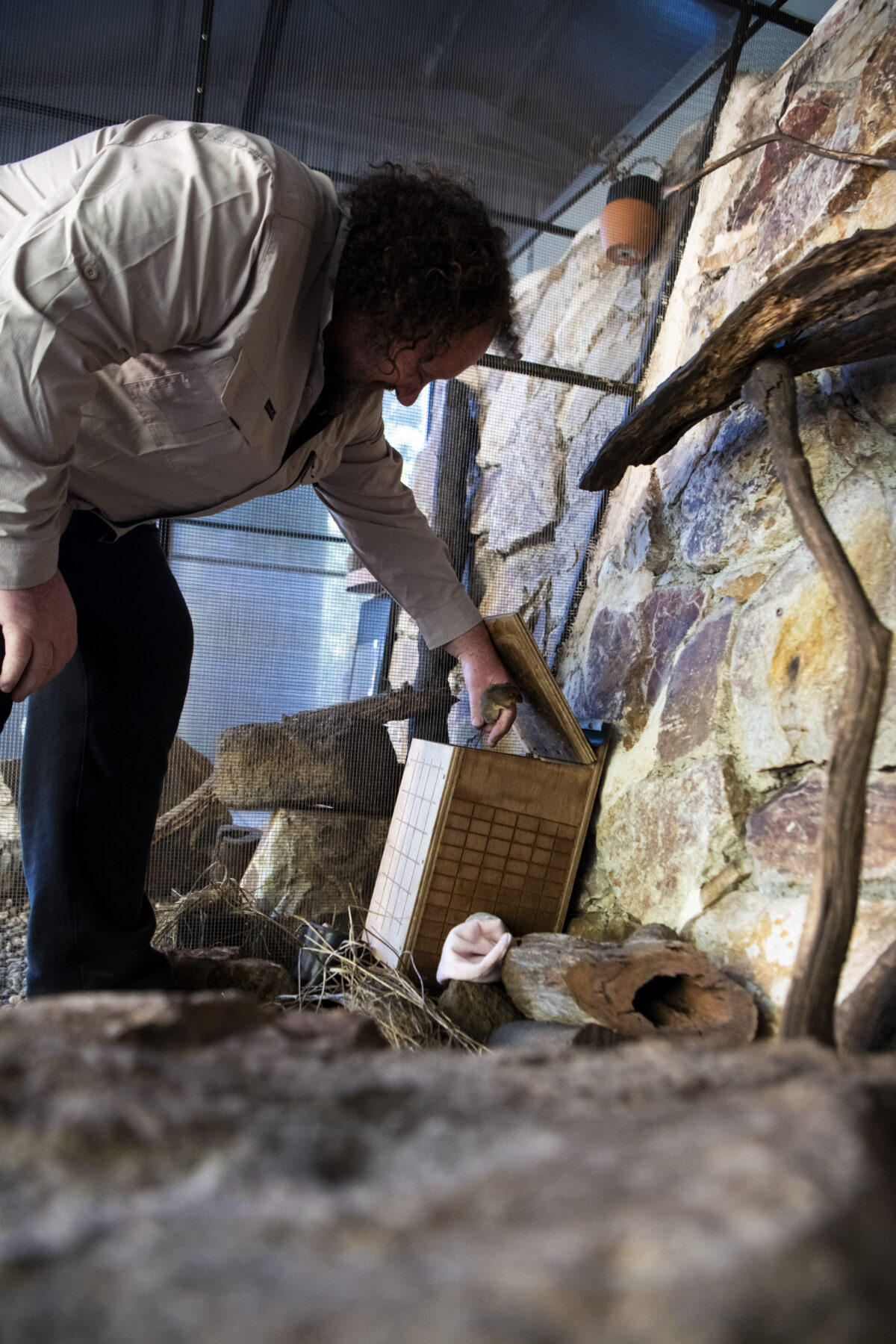

Today, Secret Creek Sanctuary is the keystone of AEFI’s wildlife conservation programs. After the 2019–20 bushfires, AEFI received a grant from the Bushfire Local Economic Recovery Fund, allowing Trevor – who is AEFI’s secretary – to build a wildlife hospital and rehabilitation centre and a visitor centre at Secret Creek. The wildlife hospital is
awaiting completion.
Trevor’s mountain pygmy-possum rescue plan is unfolding in stages. Stage 1 – the proof of concept – is almost complete.
Mike confirms encouraging early results. “We nearly trebled numbers in the Secret Creek breeding facility within the first year,” he says. “That proves they can survive and thrive in non-alpine conditions, which is exactly what we need for their long-term survival.”
Possums at Secret Creek experience a shortened torpor of 8–10 weeks compared to 12–14 weeks in the wild. Although this may reduce their average 14-year lifespan, the crucial finding is that they can fatten and breed successfully at an altitude of 1000m, well below their native alpine range of 1300–2230m.
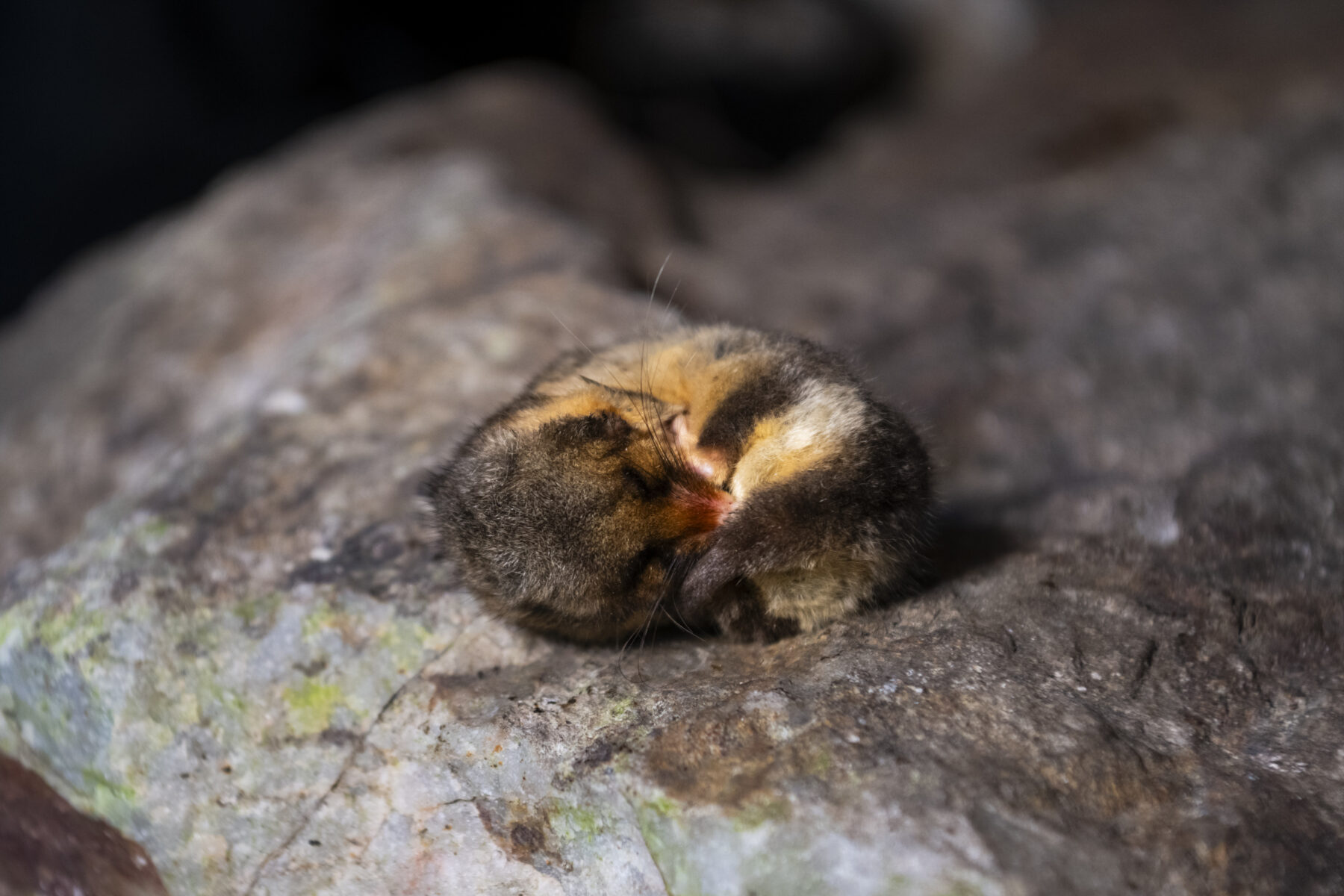
However, there are other benefits to the possums bunking in at Secret Creek. “They’re really hard to study in the wild because once they get down into the strata of the rock layers, you can’t even get a camera down in there, so you don’t really know what goes on,” Trevor says. “We’ve been the first to film them mating and sleeping, and [to document] the type of nest they build.”
Stage 2 will involve bringing wild possums into the fold. Trevor has requested 10 – pending permits and breeding cycle counts from Stage 1. “You usually do a count going into hibernation and [then] one coming out, just to make sure everyone made it, because some do perish during hibernation,” Trevor says.
The plan is to carefully capture possums from at least four genetically distinct populations in Kosciuszko National Park and possibly Victoria’s alpine reserves. Each will be microchipped, health checked and brought to Secret Creek, where they’ll be kept separate from the Victorian group already onsite.
Once a new generation is grown and researchers are confident the animals can find food and shelter, the plan is to reintroduce the possums into areas of lowland temperate wet forests of the kind where their ancestors thrived.
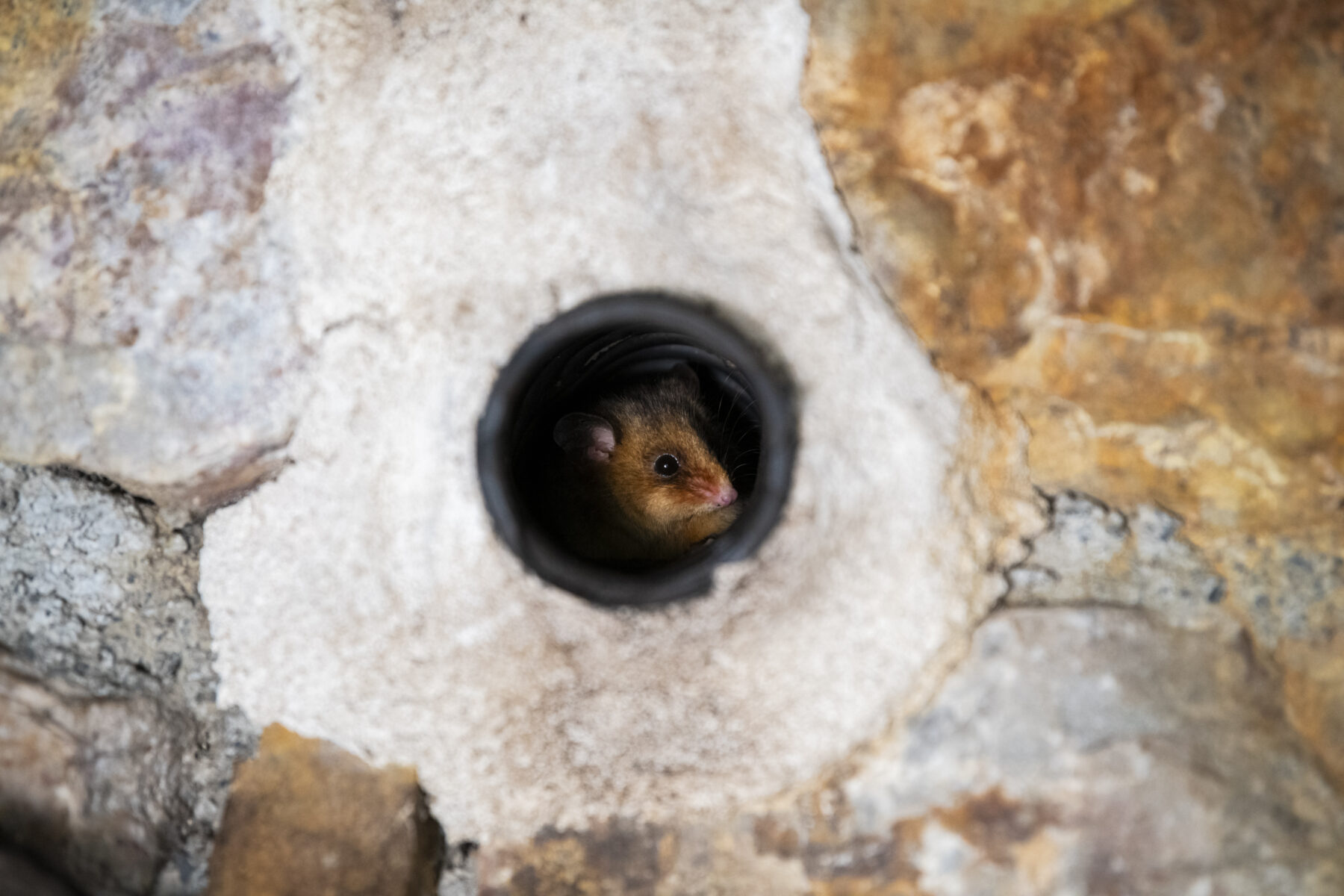
While the ultimate goal is reintroduction to the wild, Mike stresses that strategy will likely focus on offspring rather than the original adults. “Maintaining a stable, resilient population in the facility is the first priority,” he says. “But once offspring are raised in that environment, they could be ideal candidates for trial releases.”
Such an epic shift in altitude range for the species would be unthinkable without captivity. Realistically, reintroductions of possums to lower altitudes might begin within about five years, Trevor says.
The full three-stage program – breeding, release, monitoring – will likely extend into the late 2020s or beyond.
Buying time
Trevor plops a tiny possum gently onto a rock and tries to coax it towards the nesting box. It veers along a tree branch and scurries across the wire caging like an indoor rock climber. He selects another active juvenile for photos. When he calls time on our photo shoot in consideration of the fragile possums, three of the critters are scampering around the enclosure, one clinging to the ceiling upside down, posing for the camera.
Although these juveniles should be sleeping, food is provided for the sleeping adults who, according to Trevor, “wake up in a bit of a daze about once a week, stumble to the bathroom, have a pee and snack on something before getting back in bed”.
Trevor Evans – Founder and owner, Secret Creek Sanctuary
If we can build a stable possum population here, we can give them a chance in a changing world.
The goal of the Secret Creek breeding program is to preserve genetic diversity and buy time in the interim to ultimately bring this creature back from the brink of extinction. “If we can build a stable possum population here, we can give them a chance in a changing world,” Trevor says.
While the mountain pygmy-possums at Secret Creek aren’t on display, their presence through the program is a chance to educate others about their plight. Each visitor becomes a potential lifelong advocate for their survival.
For Mike, the implications extend well beyond one species. “I’m confident this animal can be saved from extinction,” he says. “But we need to be bold, and use every tool available – translocation, rewilding, breeding, even radical measures like serious feral cat control, as well as traditional habitat protection. Business as usual is no longer acceptable.”


